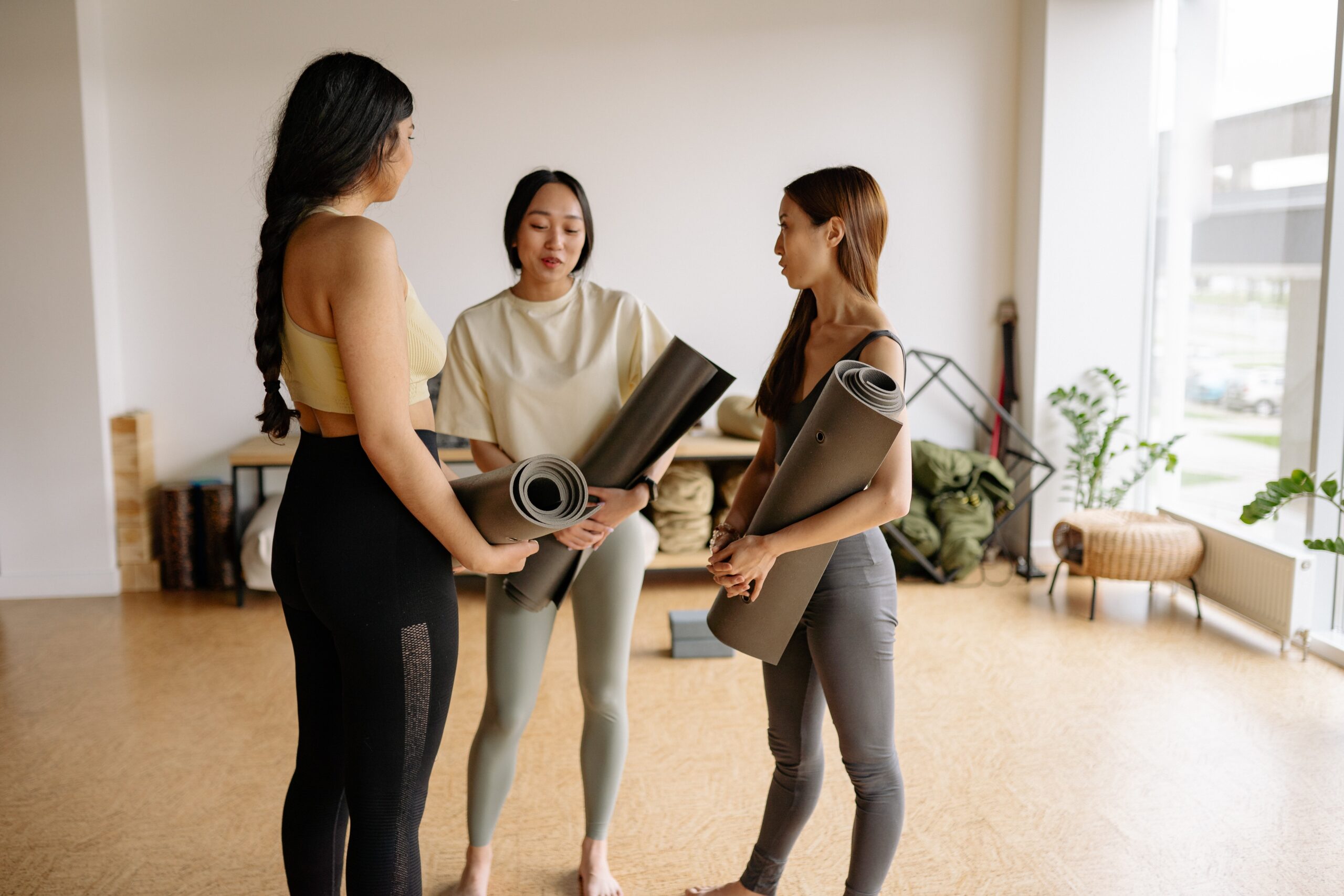
Table of Contents
Introduction
Yoga is not only limited to India now, it’s widespread and spreading even further, faster! While gauging the spread, I came across “Alo Yoga”. Alo Yoga is gone beyond and emerged as a leading brand in the world of yoga and activewear, offering a fusion of yoga and fashion-forward designs.
People across the world do want to practice yoga but they want to do it in style. Well, it’s good that they are at least rolling out the mats.
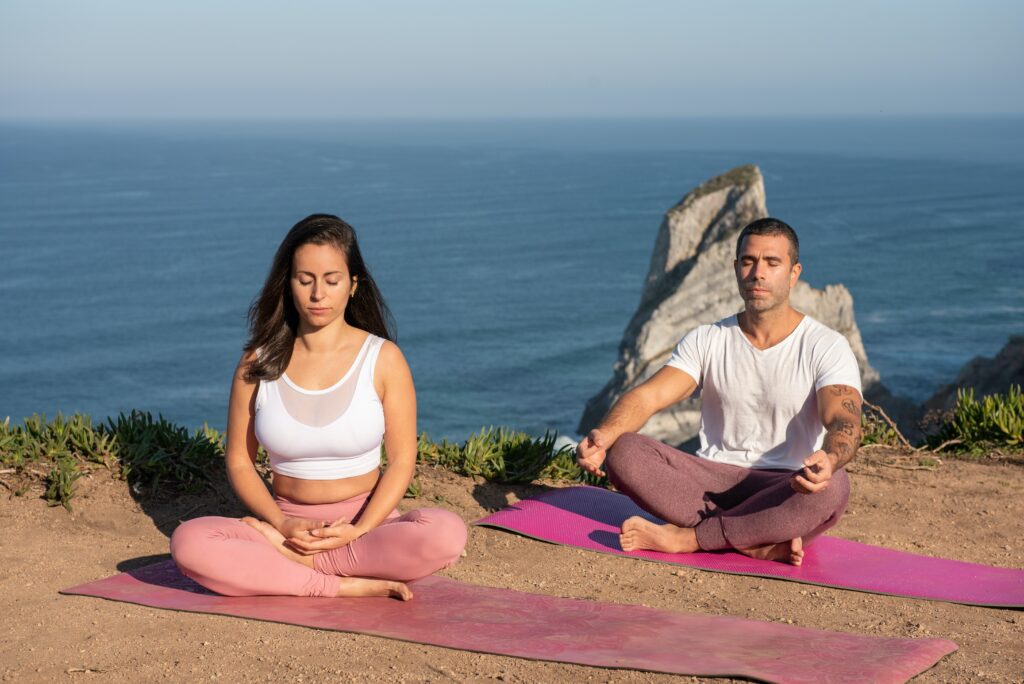
Yoga mats have become essential tools for yogis of all levels, providing comfort, stability, and traction during practice. With a wide variety of options available in the market, finding the right yoga mat can be a daunting task.
This comprehensive guide attempts to demystify the world of yoga mats, exploring their benefits, types, materials, and key considerations. Whether you’re a seasoned yogi or a beginner embarking on your yoga journey, understanding the importance of a quality yoga mat will enhance your practice and contribute to a more fulfilling and enjoyable experience.
Benefits of Yoga Mats
Yoga mats offer numerous benefits that enhance the overall yoga experience. They provide cushioning and support to help protect your joints, especially during intense poses or challenging sequences.
Mats also offer traction, preventing slips and falls, which is particularly crucial in more vigorous or sweaty practices.
Additionally, yoga mats create a personal space for your practice, demarcating a designated area and providing a sense of stability and grounding.
Furthermore, they act as a hygienic barrier between your body and the floor, offering cleanliness and peace of mind.
Types of Yoga Mats
Yoga mats come in various types, each designed to cater to different preferences and requirements. Standard mats are the most common and suitable for all types of yoga.
Travel mats are lightweight and compact, making them ideal for yogis on the go. They are easily foldable or rollable, fitting into travel bags or suitcases effortlessly. Thick mats offer extra cushioning and support, benefiting those with sensitive joints or those practicing restorative or gentle yoga styles.
Eco-friendly mats are made from sustainable materials, such as natural rubber or cork, minimizing the environmental impact.
Lastly, specialized mats, like alignment mats or extra-long mats, cater to specific needs, such as alignment assistance or accommodating taller practitioners.
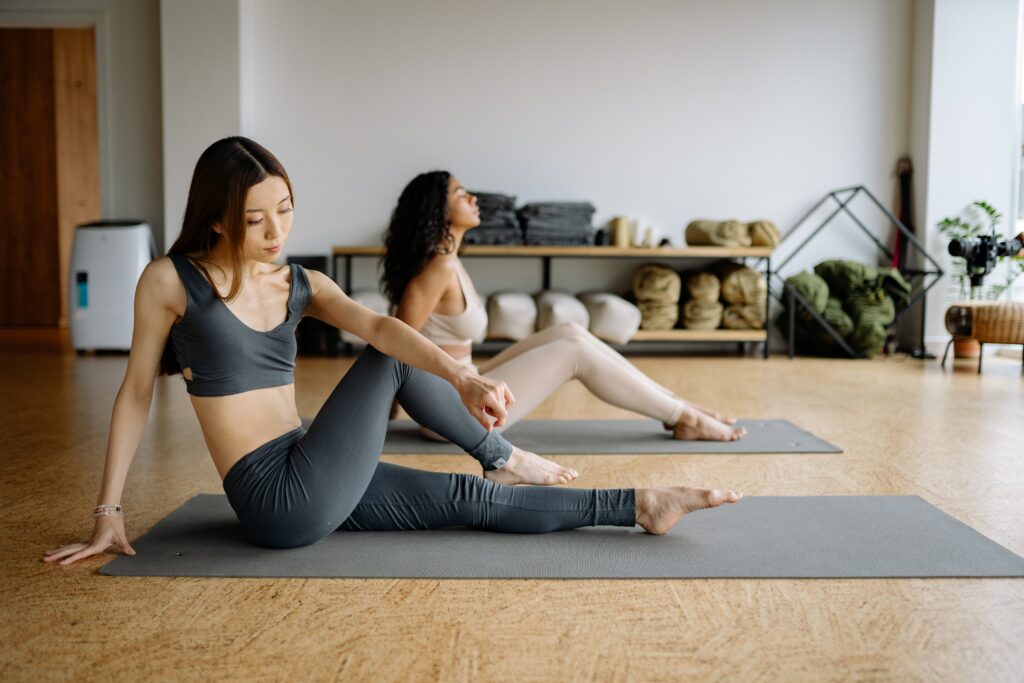
Materials
Yoga mats are made from various materials, each with its unique characteristics. PVC (polyvinyl chloride) mats are the most common and affordable. They are durable, offer a good grip, and are easy to clean. However, PVC mats are not environmentally friendly and may contain harmful chemicals.
Natural rubber mats provide excellent traction, durability, and cushioning. They are biodegradable, non-toxic, and suitable for those with allergies or sensitivities.
TPE (thermoplastic elastomer) mats are a more eco-friendly alternative to PVC. They are lightweight, durable, and have good cushioning properties.
Cork mats offer a natural, antimicrobial surface with excellent grip, ideal for hot yoga or those who sweat profusely.
Other materials used in yoga mats include jute, organic cotton, and microfiber, each with its specific advantages and characteristics.
Key Considerations
When selecting a yoga mat, several factors should be taken into account.
The thickness of the mat is one such factor that determines the level of cushioning and support the mat can provide. Thicker mats (around 6mm) are suitable for gentle or restorative practices, while thinner mats (around 3-4mm) offer better stability for balance poses.
The grip is essential to prevent slips and ensure stability during challenging postures. You should select mats with textured or non-slip surfaces. Size and weight should be considered, especially for those who travel frequently or have limited storage space.
Standard mats are typically 68-72 inches long and 24 inches wide, but longer and wider options are available for taller practitioners or those who prefer extra room.
Consider the mat’s durability and ease of maintenance. High-quality mats may cost more initially but are likely to last longer, saving money in the long run.
Lastly, take into account your personal preferences.
Best Buys
While buying a yoga mat, the moment you enter the keyword” yoga mat”, there will be suggestions like- yoga mat thick, yoga mat for a home workout, yoga mat for women, yoga mat for men, yoga mat for kids and the list goes on …..
In a family, as far as I know, everyone would prefer to have their own yoga mats. Yoga mats also work as a gift for special occasions and you can get the mats customized or write a heartfelt note to create a lifelong memory.
Amazon Basics ½-Inch Extra Tick
This mat the low priced and is super popular. The product has been rated 4.6 on a scale of 5 by over 80,000 satisfied customers. The mat is extra tick. The textured surface provides extra traction. The mat wipes clean easily and the dimensions are 74X24X0.5 (LXWXH).
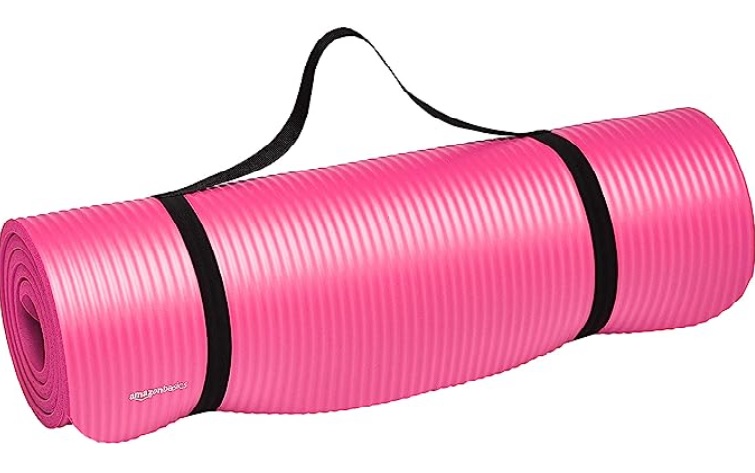
NewMe Fitness Yoga Mat
This mat for men & women is my favorite for an innovative idea of 70 printed yoga poses for Pilates, Workout and Stretching on the mat itself.
The Mat has been rated 4.7 by over 8000 satisfied customers. The size of the mat is 68X24X0.5 inches (LXWXH).
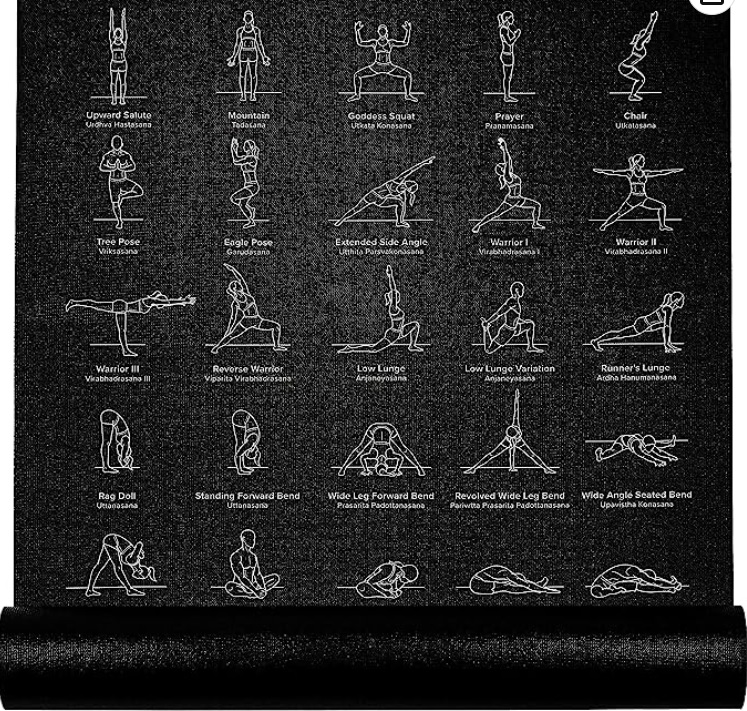
Manduka PRO
Manduka Pro Yoga mat is a professional quality ultra-supportive yoga mat crafted in Germany. It is 6mm thick and weighs 7.5 pounds. The standard size of the mat is 71X26X0.24 inches( LXWXH).
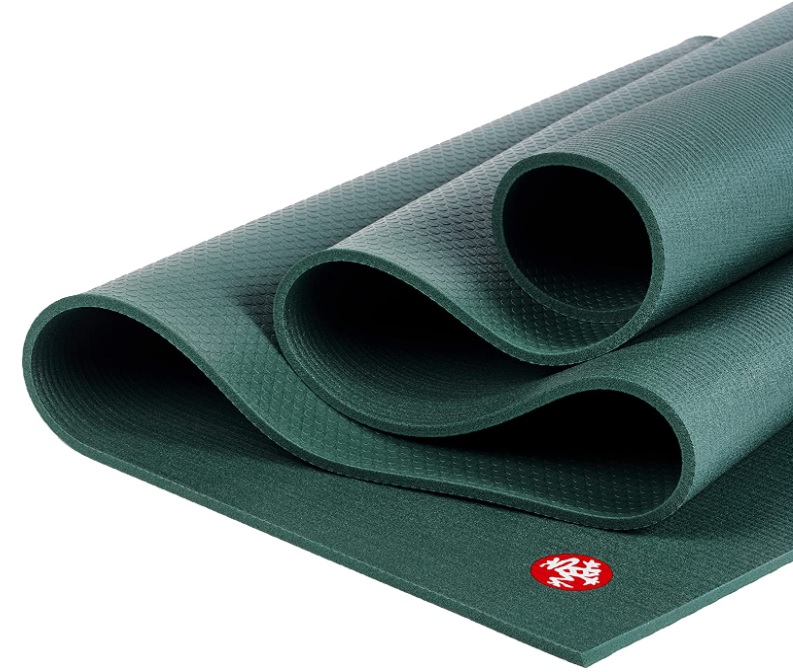
Checklist
# Check: Material used
#Check: Dimensions
# Check: Weight
# Check : Thickness
# Check : Perfect for all types of yoga(hot yoga, ashtanga, vinyasa)
# Check : Easy to clean
Disclaimer-
The information in this article is for general informational purposes only and should not be considered professional advice. Your reliance on this information is strictly at your own risk. The opinions expressed in the article are subjective and may not be universally applicable. Before making any decisions or purchases, it is advisable to conduct your own research and consult with a qualified professional and we shall not be held liable for any losses or damages arising from the use of this information. The inclusion of any product or organization does not imply endorsement. Read the article with the understanding that it is subject to our general terms and conditions. If you have any concerns, please contact us.
FAQs
What are yoga mats used for?
A yoga mat is a specially designed mat that provides a cushioned and non-slip surface for practicing yoga. It is used to provide comfort, support, and stability during yoga poses and exercises.
What are yoga mats made of?
Yoga mats are typically made of materials like PVC (polyvinyl chloride), TPE (thermoplastic elastomers), natural rubber, or cork. Each material has its own unique properties and benefits, such as grip, durability, and eco-friendliness.
How thick should a yoga mat be?
The thickness of a yoga mat can vary, but a standard thickness is usually around 4-6 millimeters (1/6 to 1/4 inch). Thicker mats offer more cushioning and are suitable for individuals who prefer extra support, while thinner mats provide a closer connection to the floor and are more portable.
Are yoga mats non-slip?
Most yoga mats are designed to have a non-slip surface to help prevent you from slipping during your practice. However, the level of grip can vary depending on the material of the mat. Rubber and cork mats are known for their excellent grip, while PVC and TPE mats often have a textured surface to enhance traction.
How do I clean a yoga mat?
To clean your yoga mat, you can use a mild detergent or a yoga mat cleaner. Start by wiping the mat with a damp cloth or sponge, and then apply the cleaner and scrub gently. Rinse the yoga mat thoroughly in water and dry it up naturally. Avoid using harsh chemicals or soaking the mat for an extended period, as it can damage the material.
Can I use a yoga mat for other exercises besides yoga?
Yes, yoga mats can be used for various exercises besides yoga, such as Pilates, stretching, meditation, or general fitness routines. They provide a comfortable and stable surface for any activity that requires cushioning and grip.
How long does a yoga mat last?
The lifespan of a yoga mat depends on its quality, usage, and maintenance. On average, a well-cared-for mat can last anywhere from one to five years. Proper storage & limited cleaning can help prolong its lifespan
Are there different sizes of yoga mats?
Yes, yoga mats come in different sizes to accommodate various body types and preferences. The standard size is typically 68 inches long and 24 inches wide, but you can also find longer and wider mats to suit taller individuals or those who prefer more space.
Can I practice yoga without a mat?
While a yoga mat provides many benefits, such as cushioning, grip, and hygiene, it is not strictly necessary to practice yoga. If you don’t have a mat, you can practice on a non-slip surface like carpet or grass. However, using a yoga mat can enhance your comfort and stability during poses.
I love the eco-friendly materials used in this mat, aligning with my values.